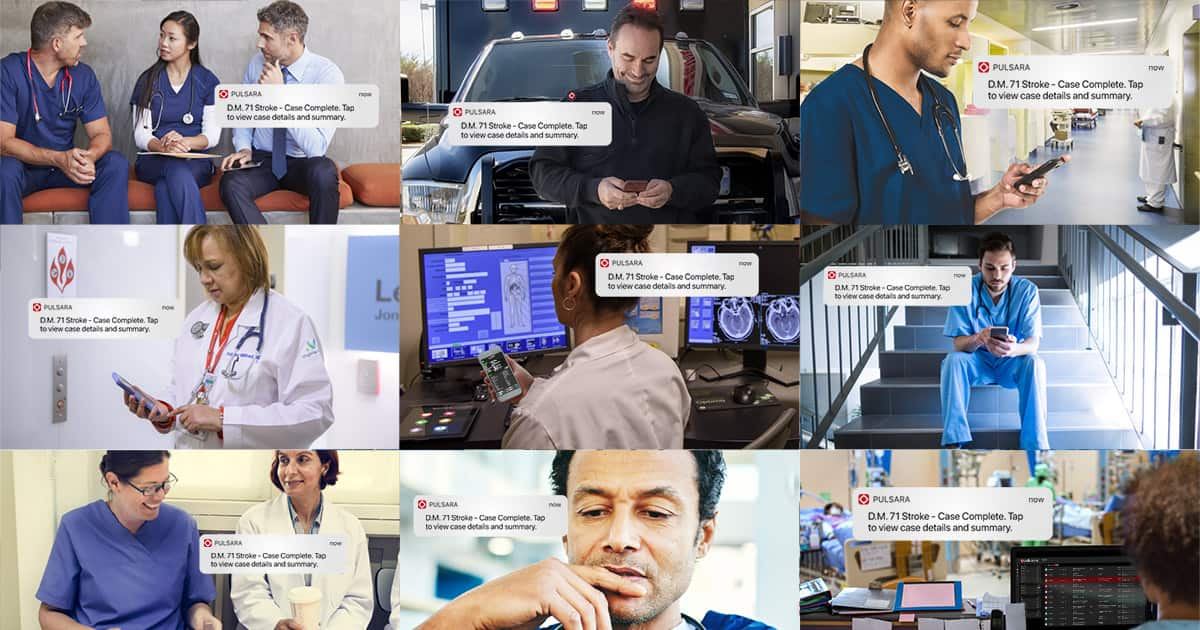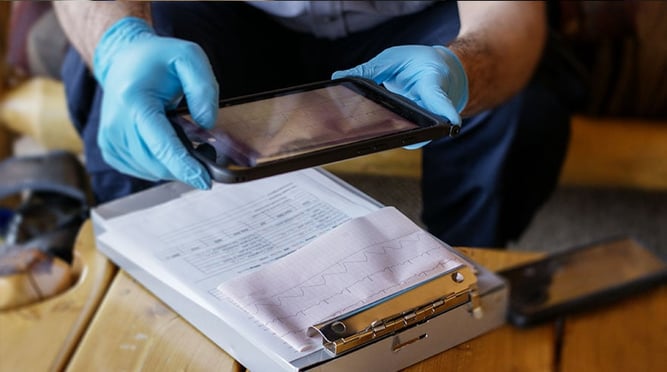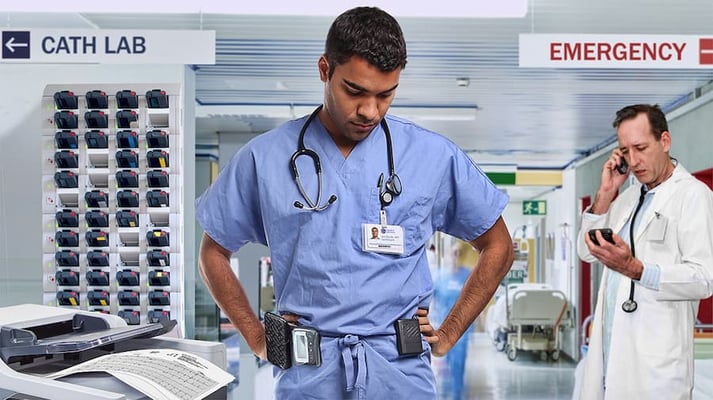Pulsara Around the World - 2025 Recap and January 2026
December Recap After an incredibly busy events year with 102 conferences, trade shows, and sponsorships, December was on the slower side for us, with...
3 min read
 Team Pulsara
:
Jun 18, 2021
Team Pulsara
:
Jun 18, 2021

There are a lot of logistics that go into coordinating time-sensitive care for a single patient. From the first notification from EMS to contacting all the appropriate members of the team to making sure everyone has the right information, trying to assemble the team in time for the patient's arrival is a complex process.
In order to address all of a patient's time-sensitive needs, you need to coordinate with multiple team members. This often creates challenges in timing, location, and communication for care teams.
Quality patient care requires in-sync collaboration with medics, nurses, physicians, and specialists—all working within different organizations—from EMS agencies to hospitals to labs and clinics. In today’s healthcare systems, patient data is shared up, down, and across communication silos, spanning different organizations and technology platforms.

Legacy communication tools such as radio, phone calls, faxes, and pagers are still being used by many healthcare systems. These non-interoperable technologies hamper the care team’s ability to provide the best possible care in the most coordinated and efficient manner—potentially impacting cost of care, and more importantly, patient lives.
Complex communication processes lead to potentially missed informationthat puts patients at risk. Experts believe 80% of medical errors occursecondary to miscommunication during transitions of care. 1
In an ideal scenario, assembling an effective care team in one place should be simple and fast. Unfortunately, in reality, important details often get lost in translation and precious time is wasted—affecting the ability to deliver effective patient care.
Imagine if pre-hospital EMS practitioners could instantly transmit an ECG to the hospital cardiologist with the ease of a secure app on their smartphone, allowing the patient to bypass the ED and go straight into the CATH lab.

That’s just one small example of how streamlined communication can help care teams provide the best possible care to patients.
Replacing outdated methods of communication in healthcare systems with modern communication technology solutions can unite care teams and address inefficiencies in current care coordination processes, helping to:
Teamwork, communication, and efficiency may improve through training, but often the real culprit behind inefficiency and miscommunication is the processes, not the people. No amount of training nor skill for practitioners can combat the roadblocks introduced by an outdated and disconnected healthcare communication infrastructure.
Playing a game of telephone wastes precious time in medical emergencies.

Traditional radios, pagers, fax machines, modems, and answering service communications were not designed for real-time team collaboration—and they are less than ideal for acute care correspondence. Every time that information changes hands, there is an increased risk of introducing errors or losing vital information. Using a patchwork system of communication tools relies on information being shared by one person, then captured, written down, or entered into a new system by another, exponentially increasing the risk of miscommunication.
Members of the care team must often make multiple phone calls in order to ensure every player in the patient response is on the same page and ready for treatment. During patient emergencies it is difficult—if not impossible—to determine the availability and readiness of medical resources, even within the hospital.
Most communication between multiple healthcare organizations is achieved usingradios, phones, fax machines, and limited telemedicine solutions—none of which are interoperable with each other, nor capable of keepingall patient communication in one secure channel.
Unifying an entire team of healthcare providers across multiple organizations—with one direct channel of communication—has the potential to keep everyone on the same page throughout a patient’s care journey. Studies have indicated reductions in time-to-treatment by 25 to 51% when using mobile technology and telehealth solutions to coordinate time-sensitive patient cases, such as stroke. [2,3,4]
Time and lives are precious. Ready to build and unite your inter-organizational care teams with a solution that works?
Questions to Ask Yourself and Care Team Members:
Let’s create better patient care together.
1. “Joint Commission Center for Transforming Healthcare Releases Targeted Solutions Tool for Handoff Communications,” Joint Commission Perspectives. 2012; 32(8)
2. Àngels Pedragosa et al., “Impact of a Telemedicine System on Acute Stroke Care in a Community Hospital,” Journal of Telemedicine and Telecare 15, no. 5 (July 9, 2009): pp. 260-263, https://doi.org/10.1258/jtt.2009.090102.
3. Ather Taqui et al., “Reduction in Time to Treatment in Prehospital Telemedicine Evaluation and Thrombolysis,” Neurology 88, no. 14 (March 8, 2017): pp. 1305-1312, https://doi.org/10.1212/wnl.0000000000003786.
4. Gary H. Belt et al., “In-Transit Telemedicine Speeds Ischemic Stroke Treatment,” Stroke 47, no. 9 (August 4, 2016): pp. 2413-2415, https://doi.org/10.1161/strokeaha.116.014270.
![]()

December Recap After an incredibly busy events year with 102 conferences, trade shows, and sponsorships, December was on the slower side for us, with...

Editor's Note: In July 2025, EMS1 and Fitch & Associates released their annual EMS trend survey, What Paramedics Want, proudly sponsored by Pulsara....
![[PRESS RELEASE] Published Research Finds Up to 31% Faster STEMI Treatment Times in Rural Hospital Setting with Pulsara](https://www.pulsara.com/hubfs/_1_website-page-blog-assets/pulsara-hosp-teams-assign-cardio-stemi-rn-1200x701.jpg)
Published research shows how using Pulsara, alongside standardized field activation and a focus on stakeholder relationships, improves STEMI care and...